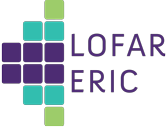Speaker
Description
Over the past 10 years, increasingly intensive studies of the ionosphere have been carried out using LOFAR data [1-5]. LOFAR detects scattering of high frequency (HF) (MHz) electromagnetic waves (EMW) emitted by astrophysical sources (supernovae, pulsars) on ionospheric (wave) excitations/plasma structures. Excitation and penetration of increasingly intense nonlinear active plasma structures, including traveling ionospheric disturbances (TIDs), from high and low latitudes to mid-latitudes is expected during current period of increased solar activity 2023-2025. At the University of Warmia and Mazury in Olsztyn, Poland, the project “Modern Radio-Diagnostics of the Ionosphere using LOFAR and GNSS Data” National Center of Science (Poland) is currently underway. Its goal is to consolidate ongoing experimental and theoretical research, including data and modelling on excitation and scattering of HF EMW on wave plasma structures in unstable nonlinear space (ionospheric and interstellar) plasma. Example of such structures are ones connected with Hunga-Tonga volcano eruption. Possible applications include ionospheric diagnostics, including catastrophic space weather phenomena, as well as the identification of new mechanisms of nonlinear wave interactions in space plasma. Experimental studies and sampling of LOFAR and GNSS data are now aimed at identifying structures with characteristic TID parameters, presumably associated with atmospheric gravity waves (AGW), including corresponding ionospheric excitations caused by the solar terminator. It is planned to present theoretical results obtained from models of (1) scattering of HF EMW on ionospheric plasma structures, based on the method of complex geometric optics (CGO) and (2) ionospheric plasma structures, and work is currently underway to include wave excitations caused by solar terminator. The new results will be presented: (a) results of multi-beam scattering of HF EMW on plasma structures were obtained; (b) for frequencies several times higher than the cutoff frequency, when scattered by a plasma structure moving at a speed of the order of (0.3-0.1) km/s, Doppler frequency shifts have different signs for ordinary and extraordinary waves; (c) as horizontal size of plasma structures decreases, difference in Doppler shifts of ordinary and extraordinary waves increases. [1] M. P. van Haarlem et al., A&A, 556 ,2013, A2 DOI: https://doi.org/10.1051/0004-6361/201220873 [2] R.A. Fallows et al., JSWSC, 2020, 10, 10, doi.: 10.1051/swsc/2020010. [3] B. Forte et al., Astrophysical Journal, Supplement Series, 2022, 263, 36, doi.:10.3847/1538-4365/ac6deb. [4] P. Flisek et al., JSWSC, 2023, 13, 27, doi.: 10.1051/swsc/2023021. [5] Dorrian, G. et al. (2023). Space Weather, 21, e2022SW003198. https://doi.org/10.1029/2022SW003198

